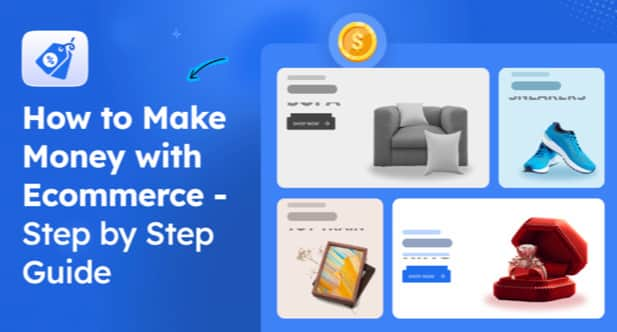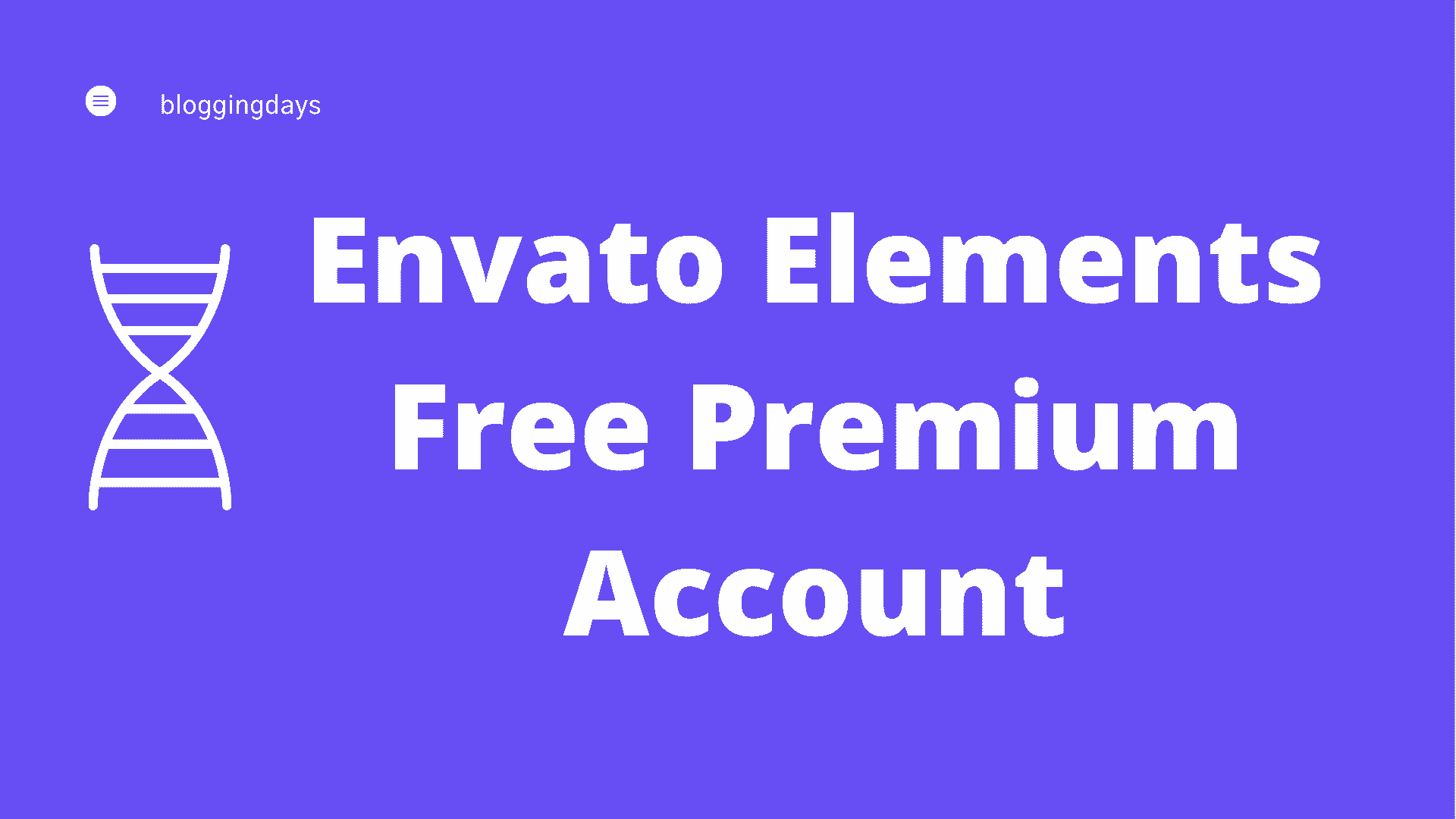I’ve worked with creators and small business owners launching online stores for over five years now. One thing I’ve learned is that eCommerce isn’t just a trend; it’s a real way to build financial freedom.
By 2025, global eCommerce sales are projected to reach $7.39 trillion, making up 24.5% of total retail sales.
That’s not just growth, it’s a clear sign of where the money is moving.
But most beginners I meet either overthink the process or get stuck before they even begin. You don’t need a warehouse or huge investment, just the right steps and a clear focus.
In this guide, I’ll walk you through exactly how to start and grow a profitable eCommerce business. Whether you’re a creator, product seller, service provider, or total beginner, this is for you.
Here are 12 steps and tools to get started,
Step 1 – Understand the eCommerce Landscape
Before you jump in, take a moment to understand what you’re really getting into. eCommerce looks exciting, but if you don’t know the landscape, it’s easy to waste time and money.
For example, I once helped a fitness coach who launched a store selling custom water bottles. She had a great product, but no clear audience or delivery plan; sales didn’t come until we fixed that.
You don’t need to know everything, but you do need a basic plan. Know your product type, business model, and what your target customer actually wants.
Step 2 – Choose Your Business Model to Earn Money with eCommerce
If you’re wondering how to make money with eCommerce, there are many proven paths to success. In this section, you’ll discover popular business models and ideas to help you start:
- Dropshipping: This model lets you sell trending products without holding inventory or handling shipping. It’s a low-risk way to test products and learn what sells best. Platforms like WooCommerce will be the easy option.
- Print-on-Demand: Perfect for creators who want to sell custom designs on items like shirts or mugs. Products are printed only after purchase, so there’s no upfront cost or stock to manage. It’s a popular, resource-light way to offer unlimited products.
- Affiliate Marketing: Promote other brands’ products and earn commissions without worrying about fulfillment or product listings. Growing an audience on social media or YouTube can boost earnings here.
- Sell Handmade Items: Handmade products let sellers showcase creativity and connect with buyers who appreciate unique goods. High-quality photos and clean product image backgrounds help build trust and attract customers. It’s a great way to develop a loyal following over time.
- Sell Digital Products: Ebooks, courses, templates, and printables can be created once and sold repeatedly without inventory. This model offers high profit margins and scalability. Online courses, in particular, are rising in popularity and provide steady income streams.
- Sell Your Services: Coaching, consulting, or freelancing allows monetizing skills without physical products. Building a social media presence and a professional website helps attract clients and grow business. It’s ideal for those who enjoy personalized work and direct interaction.
- Teach Online Courses: Packaging expertise into courses can reach many students with minimal overhead. Selling through marketplaces or a personal website with a smooth checkout process can simplify sales. This approach is an effective way to scale knowledge-based income.
- Monetize a Blog or YouTube Channel: Creating valuable content builds an audience that can be monetized through ads, sponsorships, or affiliate links. Consistency and quality are key to growth and long-term success. Many creators combine this with other ecommerce ideas to make money.
- Retail Arbitrage or Amazon FBA: Buying discounted products to resell on platforms like Amazon can be profitable, but it requires upfront investment. Amazon handles storage and shipping, easing logistics. A clear business plan and attention to product listings boost chances of success.
- Resell Existing Products: Purchasing wholesale products to resell on marketplaces like eBay or Etsy can be lucrative. Success depends on sourcing quality items and competitive pricing. Great photos and clear descriptions make listings stand out.
- Develop a Unique Product: Creating an original product to meet a specific need can set a business apart. It requires careful development and marketing but offers great rewards. A solid business plan and excellent product visuals are essential for launch.
Step 3 – Pick the Right Niche
Choosing the right niche is very important because it helps you focus and find the right customers. Before you start selling, knowing your niche will guide your product choices and marketing.
For example, instead of selling general “fitness products,” focus on something specific like “yoga mats for beginners.” This makes it easier to reach people who really want what you’re selling and face less competition.
You can use free tools like Google Trends and AnswerThePublic to see what people are searching for. This helps you find good niches with demand and avoid ones that are too crowded or not popular.
When your niche is clear, everything else becomes simpler, like choosing products, building your website, and creating content. A good niche is the key to starting and growing a successful eCommerce business.
Step 4 – Select the Right Products to Sell
Choosing the right products means looking at demand, profit margin, and how easy it is to deliver them. These factors help you pick items that sell well and keep your business running smoothly.
For example, selling digital products like online courses has low delivery costs and high margins, while physical products may require more storage and shipping. Knowing these pros and cons helps you decide what fits your business best.
Before fully committing, test your product ideas early with small batches or pre-orders. This saves you time and money by showing what your customers really want before you invest heavily.
Step 5 – Choose Your eCommerce Platform
Choosing the right eCommerce platform can feel overwhelming, but I’m here to help. Below, I’ll share the main options and explain which one will suit your needs best, so you can pick the perfect fit for your business.
- WooCommerce: If you’re exploring ecommerce business ideas for beginners and want full control, WooCommerce is a fantastic option. It’s highly customizable and works seamlessly with WordPress, letting you add the exact features you need.
- Shopify: Looking for an easy, all-in-one platform? Shopify handles hosting, payments, and store setup so you can focus on growing your business without technical hassles.
- BigCommerce: If you plan to scale quickly, BigCommerce offers built-in tools and flexibility to support growing stores with more complex needs.
- Gumroad or Podia: If you are selling digital products like courses or downloads, these platforms make the process simple and smooth, so you can focus on your content and audience.
- Squarespace: Perfect for creatives who want a beautiful website and simple eCommerce features all in one place, without needing advanced tech skills.
Step 6 – Build and Optimize Your Online Store
Building your online store means focusing on key pages like your homepage, product pages, and checkout, all optimized for mobile users. A smooth, easy-to-navigate site keeps visitors engaged and ready to buy.
For example, clear product descriptions and high-quality images helped one store boost sales by 30%. Including customer reviews also builds trust and encourages more purchases.
To increase conversions, make your checkout simple and reduce distractions. Adding features like a progress bar or multiple payment options can make a big difference in completing sales.
Step 7 – Set Up Payments, Shipping, and Fulfillment
Setting up payment options like Stripe and PayPal is one of the primary ways to make money with an ecommerce business smoothly. These gateways are popular, easy to use, and work well with most online marketplaces.
For example, a dropshipping store using PayPal saw fewer cart abandonments and more completed sales. Clear shipping rules and delivery times also help avoid added costs and keep customers happy.
You can handle shipping yourself or use print-on-demand, which is great if you run a subscription box business. Using third-party logistics (3PL) or dropshipping lets you grow without listing products or managing inventory.
Picking the right shipping and fulfillment method helps control costs and keep orders on time. This makes your store more reliable and easier to run as you list products and grow.
Step 8 – Market Your Store Effectively
After setting up your store and payment methods, the next step is marketing to bring in customers. I’ll walk you through free and paid traffic channels so you can find the best ways to grow your business.
Free Traffic Channels
Here are some free traffic channels you can use to attract visitors to your store without spending money:
- Blogging and SEO: Creating helpful blog content around your niche attracts visitors over time. Optimizing for SEO helps your site rank higher on search engines, bringing steady, free traffic without ongoing ad costs.
- Email Marketing Essentials: Building an email list lets you connect directly with interested customers. Sending useful updates, product launches, and special tips keeps your audience engaged and encourages repeat sales.
- Pinterest, Instagram, and YouTube Content: Using these platforms to share valuable and engaging content helps you reach your target audience organically. Visual platforms like Pinterest and Instagram work great for product discovery, while YouTube builds trust with tutorials and reviews.
Paid Traffic Options
If you want faster results, paid traffic channels can get your products in front of more customers quickly. Here are some effective paid options to consider for boosting your sales.
- Shopping Ads (Google, Meta, TikTok): Running targeted shopping ads on platforms like Google, Facebook, and TikTok gets your products in front of ready-to-buy customers fast. These ads are highly measurable, letting you optimize spend for best results.
- Influencer Collaborations: Partnering with influencers in your niche can introduce your products to a loyal and engaged audience. This approach builds trust quickly and often leads to high conversion rates when done right.
- Retargeting Ads: Retargeting helps you reconnect with visitors who didn’t buy the first time. Showing tailored ads to this warm audience encourages them to return and complete their purchase, boosting your overall sales efficiently.
Step 9 – Turn Visitors into Customers
Building trust is key to converting visitors into buyers. Use testimonials, live chat support, and offer a money-back guarantee to make shoppers feel confident in their purchase.
For example, one store boosted sales by 25% after adding real customer reviews and a live chat that answered questions instantly. Limited-time deals and product bundles create urgency and encourage shoppers to buy more.
Don’t forget to recover lost carts with follow-up emails reminding customers about what they left behind. These gentle reminders often bring people back and increase your overall sales.
Step 10 – Track Performance and Improve
Keeping track of key numbers like conversion rate, average order value (AOV), and where your traffic comes from helps you see how your store is doing. This info shows what’s working and what needs fixing to grow your business.
For example, one store found its checkout page was causing customers to leave. After making it simpler, their sales went up by 20%. Using data like this is one of the best ecommerce business ideas to boost success.
Try testing different headlines, offers, and product layouts to see what your customers like best. Small changes like these can increase sales and improve the shopping experience.
Step 11 – Scale and Diversify
To make money with eCommerce, scaling your store by adding new products or variants keeps your catalog fresh and brings back customers. This steady growth helps you avoid relying on just one product.
For example, a store expanded from selling phone cases to include matching accessories and saw a boost in sales. They also started selling on Amazon and Etsy, reaching more buyers and increasing profits.
Using automation tools to handle tasks like inventory and email marketing saves time as your store grows. This lets you focus on growing your business and making smarter decisions to scale successfully.
Step 12 – Use Recommended Tools for Growth
To help you make money with eCommerce more efficiently, here are some effective tools that can simplify your workflow, increase conversions, and boost your sales.
- Dynamic Discount: This tool helps you make money with eCommerce by offering smart, behavior-based deals—like giving a discount when someone adds multiple items to their cart. It boosts conversions without cutting too much into your profit. You can create urgency and reward bigger purchases, all automatically.
- WPFunnels: WPFunnels lets you build a complete sales journey that guides visitors from landing to checkout. It helps you increase sales by showing the right offer at the right time. If you’re serious about converting traffic into buyers, this tool makes a real difference.
- Cart Lift: Abandoned carts are losing money. Cart Lift helps you get that back. It sends friendly reminders to bring shoppers back and finish their purchase. That means more sales with less effort, making it a must-have for any eCommerce business.
- Mail Mint: Email marketing is still one of the best ways to make money with eCommerce, and Mail Mint makes it simple. Automate welcome emails, product updates, and follow-ups to keep customers engaged and buying. It helps turn one-time buyers into repeat ones.
- Checkoutify: A smoother checkout process means fewer drop-offs and more completed orders. Checkoutify helps you earn more by optimizing every step, adding trust signals, reducing distractions, and offering last-minute upsells. It’s like fixing leaks in your sales process.
Conclusion
Picking the right niche is the most important step to making money with eCommerce. When you focus on what your customers want, your sales will grow, and you won’t waste time.
Tools like Google Trends help you find niches that are popular and profitable. This gives you a better chance to succeed and build a strong business.
If your niche gets crowded, don’t worry—try smaller, focused niches or improve your products and customer service. Keeping customers happy will help your business grow and stay profitable.
Using dynamic discounts lets you offer the right deals to the right customers. This smart strategy can boost sales and build loyalty without hurting your profits.
You can use tools like Google Trends or AnswerThePublic to peel back what people are really searching for. Spotting rising popularity early helps you focus on niches with strong profitability. These tools give useful tips so you don’t waste time on a resource-intensive way of choosing.
Micro-niches let you focus on very specific audiences, making direct product sales easier and more effective. You’ll face less competition and can create loyalty programs that really connect.
While dropshipping allows you to list products from many niches, it’s smarter to pick one to start. A clear niche simplifies website development and marketing. Focusing helps you avoid added costs and confusion when building your store.
Look for niches where quality products are in demand and where people actively buy online. Different affiliate programs also reward you for promoting their products efficiently.
If that happens, you can shift to related micro-niches or improve your offerings with quality products and better service. Reselling products or exploring wholesale routes are other ways to stay competitive. Keeping your audience engaged through loyalty programs helps maintain profitability over time.











